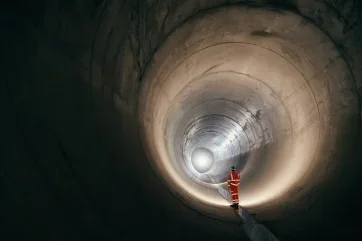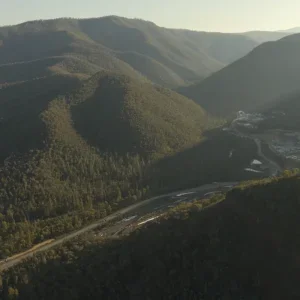
The valves, which operate like giant gates, are now open at four of the 21 locations that make up the system.
The rest of the valves are due to come online over the next few months and the sewer will be fully open next year. Thames Water will then operate the system as part of its London wastewater network.
Tideway CEO Andy Mitchel said it was an important moment for the River Thames.
“After eight years of construction, in which almost 25,000 people have contributed more than 40 million working hours, this system is operating for the first time,” he said.
“These are early days, with more connections to make and further testing to come, but the super sewer’s positive influence on the health of the Thames will increase over the coming months – and London will soon be home to the cleaner, healthier river it deserves.”
Data published today shows that in one day, when London had heavy rainfall on September 23, 589,000m3 of wastewater was captured by the system with just the first connections activated.
In May, the 25km sewer was connected to the 6.9km Lee Tunnel – completing the full London Tideway Tunnel network, which has a combined capacity of 1.6 million m3.
Work continues to bring the system into full operation. This involves connecting the remaining discharge points to the new super sewer and testing the entire system during different weather conditions, including heavy storms.
Once fully operational, the super sewer will virtually eliminate the harmful effects of sewage pollution on the River Thames through central London.
Work on the project began in 2016 – with activity taking place at 24 construction sites from Acton in west London to Abbey Mills Pumping Station in Stratford, east London.
More than 20 deep shafts – some as wide as the dome of St Paul’s Cathedral – were constructed across London to divert sewage flows and to lower TBMs into the ground.
The first TBM was launched in 2018, with primary tunnelling on the 25km main tunnel and two smaller connection tunnels fully completed in 2022.
By autumn last year, secondary lining was fully complete on all the tunnels, with the heavy civil engineering work then completed in spring this year.
The Tideway project is being delivered by three consortia. A joint venture of BAM Nuttall, Morgan Sindall Infrastructure and Balfour Beatty is working on the west region; Ferrovial Agroman UK and Laing O’Rourke on the central region; and Costain, Vinci Construction Grands Projets and Bachy Soletanche on the east.
System integration is being delivered by Amey, which is responsible for providing process control, communication equipment and software systems for operation, maintenance and reporting.
Thames Water CEO Chris Weston said the first valves opening was an exciting moment.
“The Thames Tideway Tunnel, a £4.5bn investment made by our customers, is nearing completion. We are already seeing the benefits of our £700m investment in Lee Tunnel in 2016, and the Channelsea River and River Lea now have ‘good to excellent’ water quality,” he said.
He added that Thames Water had published plans to upgrade more than 250 of its sewage treatment works. It had started the £100m upgrade of Mogden sewage treatment works and was spending £145m upgrading Beckton sewage treatment works, which would increase capacity and reduce the number of storm discharges.







